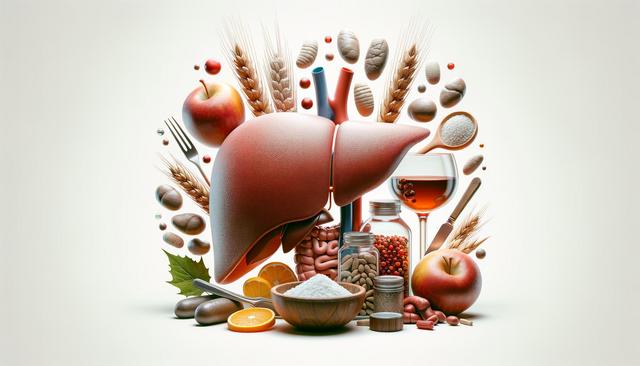Recognizing the Top 3 Early Signs of Liver Disease
The liver plays a vital role in processing nutrients, detoxifying chemicals, and producing proteins important for blood clotting. When it begins to fail, the symptoms may be subtle at first. Knowing the top 3 early signs of liver disease you should notice can help prompt timely medical evaluation. These signs include:
- Persistent fatigue that doesn’t improve with rest
- Abdominal discomfort or pain, especially in the upper right portion
- Unexplained changes in skin or eyes, such as yellowing (jaundice)
Fatigue is often dismissed as a general symptom, but in the context of liver health, it may signal the organ’s reduced ability to filter toxins. Abdominal pain can point to liver inflammation or enlargement. These initial signs are often overlooked until the disease has progressed. Paying attention to such symptoms can make a significant difference in outcomes.
How Fatigue and Abdominal Pain Relate to Liver Health
Fatigue and abdominal discomfort are not just common issues—they are key indicators connected to liver function. Understanding how fatigue and abdominal pain relate to liver health is essential in identifying problems early. The liver is responsible for metabolizing substances and producing energy. When it’s compromised, energy levels drop, leading to persistent fatigue. This type of tiredness is not usually relieved by sleep or rest.
Abdominal pain, particularly in the upper right quadrant beneath the ribs, can be a sign of liver swelling or inflammation. This pain may feel dull or sharp and can be accompanied by bloating. In some cases, liver-related pain can radiate to the back or shoulder area. Recognizing the difference between common stomach aches and liver-related pain is crucial for early diagnosis.
Other associated signs include:
- Nausea or vomiting
- Loss of appetite and weight loss
- Dark urine or pale stool
If you experience a combination of these symptoms, it’s advisable to consult a healthcare professional for further evaluation.
Digestive Symptoms Linked to Liver Dysfunction
The liver is deeply involved in digestion, particularly in processing fats and filtering toxins from food. Therefore, digestive disturbances can often be among the first indicators of liver trouble. Common digestive symptoms linked to liver dysfunction include:
- Indigestion and bloating after meals
- Frequent constipation or diarrhea
- Greasy or pale stools
These symptoms occur because a compromised liver produces less bile, which is crucial for breaking down fats. Without adequate bile, digestion slows, leading to discomfort and irregular bowel movements. Additionally, toxins that the liver would normally filter may begin to accumulate, causing further gastrointestinal issues.
While these symptoms can also be related to other digestive conditions, their persistence or combination with fatigue and pain may suggest liver involvement. Keeping a food and symptom journal can help identify patterns and support a more accurate diagnosis by a healthcare provider.
Alcohol and Non Alcohol Risk Factors for Liver Damage
Liver disease is often associated with alcohol consumption, but there are many alcohol and non alcohol risk factors for liver damage that deserve attention. Excessive alcohol intake remains a primary contributor to liver inflammation and fatty liver disease. However, non-alcoholic fatty liver disease (NAFLD) is increasingly common and linked to factors such as:
- Obesity and metabolic syndrome
- Type 2 diabetes
- High cholesterol and triglycerides
- Chronic use of certain medications
Genetics and autoimmune conditions can also play a role in liver vulnerability. People with a family history of liver disease or autoimmune liver disorders may be at higher risk even without alcohol involvement. Viral hepatitis (particularly hepatitis B and C) is another significant non-alcoholic cause of liver damage.
Understanding these diverse risk factors can help individuals take proactive steps such as regular check-ups, lifestyle changes, and early testing to reduce their risk of liver complications.
Liver Function Blood Tests Explained and Diet for Liver Support
One of the most reliable ways to assess liver health is through blood testing. Liver function blood tests explained simply, measure enzymes and proteins that indicate how well the liver is performing. Commonly tested markers include:
- ALT (alanine transaminase) and AST (aspartate transaminase): Enzymes that rise with liver cell injury
- ALP (alkaline phosphatase): May increase with bile duct issues
- Total bilirubin: Elevated levels can indicate liver dysfunction or bile flow issues
- Albumin and total protein: Help assess the liver’s synthetic function
Abnormal results may not confirm liver disease on their own but can provide essential clues when combined with symptoms and imaging studies. Alongside testing, lifestyle and dietary adjustments can promote liver health. Key diet changes that support healthy liver function include:
- Increasing intake of fruits, vegetables, and whole grains
- Reducing saturated fats and added sugars
- Limiting processed foods and alcohol
- Staying hydrated and maintaining a healthy weight
Certain foods like leafy greens, berries, and nuts contain antioxidants that may help reduce liver inflammation. Consulting with a healthcare provider or dietitian can ensure that dietary changes are both effective and sustainable for long-term liver health.




Leave a Reply